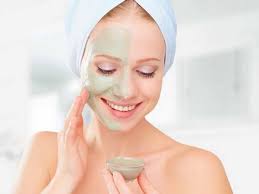
Understanding the Importance of Sunscreens SPF
As we navigate through life, our skin encounters various external elements, among which ultraviolet (UV) rays from the sun pose a significant threat. Sunscreens SPF (Sun Protection Factor) play a crucial role in shielding our skin from these harmful rays. Sunscreens SPF https://maison19.com/en/collections/sunscreens-spf not only protect us from sunburn but also help in preventing long-term skin damage, including premature aging and skin cancer. In this comprehensive guide, we will discuss the significance of sunscreens, the different types available, and how to select the best one for your skin type.
What Are UV Rays?
Ultraviolet rays are a form of electromagnetic radiation emitted by the sun. There are two primary types of UV rays that affect the skin: UVA and UVB. UVA rays penetrate deep into the skin and contribute to aging, wrinkles, and skin cancer. UVB rays cause sunburn and are primarily responsible for triggering skin cancers. Therefore, using a broad-spectrum sunscreen that protects against both UVA and UVB rays is essential for maintaining skin health.
Understanding SPF Ratings
SPF is a measure that indicates how well a sunscreen can protect your skin from UVB rays. For example, if you normally burn after 10 minutes in the sun, an SPF 30 sunscreen theoretically allows you to stay in the sun for 30 times longer without burning—about 300 minutes. However, this is not a straightforward calculation, as several factors can affect the sunscreen’s effectiveness, including skin type, frequency of reapplication, and water exposure.
How to Choose the Right Sunscreen
Choosing the right sunscreen is crucial in providing optimal protection. Here are some key factors to consider:
- Broad-Spectrum Protection: Ensure the sunscreen provides broad-spectrum protection against both UVA and UVB rays.
- SPF Rating: Select a sunscreen with an SPF of at least 30, which blocks approximately 97% of UVB rays.
- Water Resistance: If you plan to swim or sweat, opt for a water-resistant formula that can last for up to 80 minutes.
- Ingredients: If you have sensitive skin, consider mineral sunscreens with zinc oxide or titanium dioxide, which are less likely to irritate. Chemical sunscreens contain organic compounds that absorb UV radiation; knowing the ingredients will help in making the best choice for your skin type.
- Skin Type: Oily skin may benefit from gel-based or mattifying sunscreens, while dry skin may require cream-based options for added hydration.

How to Apply Sunscreen Effectively
Applying sunscreen correctly is just as important as choosing the right product. Follow these tips for effective application:
- Apply Generously: Use about one ounce (a shot glass full) to cover your entire body. Don’t forget areas like your ears, neck, and the tops of your feet.
- Time It Right: Apply sunscreen 15 to 30 minutes before sun exposure to allow it to absorb properly into the skin.
- Reapply Regularly: Reapply every two hours, or immediately after swimming or sweating. Even water-resistant sunscreens lose effectiveness over time.
- Daily Use: Incorporate sunscreen into your daily routine, even on cloudy days or when indoors, as UV rays can penetrate through windows.
Common Myths About Sunscreen
Despite the widespread knowledge about sunscreens, several myths persist. Here are a few:
- Dark Skin Doesn’t Need Sunscreen: Everyone, regardless of skin tone, is susceptible to UV damage. Use sunscreen to protect against skin cancer and hyperpigmentation.
- Higher SPF Means Better Protection: While higher SPF offers more protection, it’s not a linear relationship. SPF 30 blocks 97% of UVB rays, while SPF 50 blocks about 98%. Reapplication is key for effective protection.
- Indoor Protection Is Unnecessary: UV rays can penetrate windows, making it essential to wear sunscreen indoors if you spend extended periods near windows.
The Environmental Impact of Sunscreens
As awareness about environmental sustainability grows, it is crucial to consider the impact of certain sunscreen ingredients on marine life. Chemical sunscreens containing oxybenzone and octinoxate have been linked to coral reef bleaching. Therefore, consider using reef-safe sunscreens that utilize mineral ingredients as alternatives.
Conclusion
In conclusion, sunscreens SPF are a vital part of any skincare routine. By understanding how UV rays affect our skin, choosing the right product, and applying it correctly, we can significantly reduce the risk of skin damage and enhance our overall skin health. Make sure to reapply your sunscreen regularly and opt for eco-friendly options when possible. Protect your skin today for a healthier tomorrow!